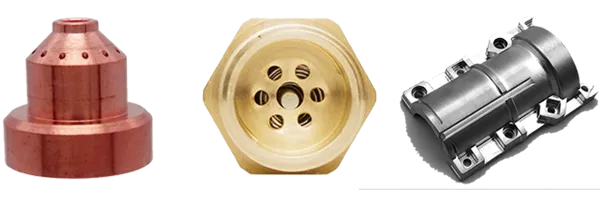Custom Online Stainless Steel Fabrication Services
Upload your CAD files to get an instant online Stainless Steel fabrication quote on custom prototypes and production parts. Lead times as fast as days and free standard shipping on all US orders.

Upload your CAD files to get an instant online Stainless Steel fabrication quote on custom prototypes and production parts. Lead times as fast as days and free standard shipping on all US orders.

The 300 series alloys, also known as austenitic stainless steel, are the ideal types of stainless steel for sheet metal fabrication due to their excellent formability, ductility, and weldability. These alloys have high levels of chromium and nickel which serve to increase their corrosion resistance far above that of standard steel. They are also easy to clean, making them well suited for food processing applications.
Stainless steel is widely used as a material for sheet metal parts. It has excellent corrosion resistance, good mechanical properties, and top-notch formability. These properties make it ideal for applications where sheet metal components are exposed to corrosive and extreme environments like those found in the marine, aerospace, and chemical processing industries.
This grade is a lower-cost alternative to 304 stainless steel. The savings are achieved by increasing its carbon content and decreasing the chromium and nickel content. The trade-off is that this lower-cost version is less resistant to corrosion when compared to the other stainless steels for sheet metal fabrication. Its applications are numerous and can include structural components for trains or appliance enclosures.
Stainless Steel 301 Properties
| Tensile Strength, Yield (MPa) | Fatigue Strength (MPa) | Elongation at Break (%) | Hardness (Brinell) | Density (g/cm^3) |
|---|---|---|---|---|
| 206 | 241 | 42 | 216 | 8.8 |
This grade of stainless steel has an austenitic crystal structure and is one of the most widely used grades. 304 is often conflated with 18-8 stainless steel but has slight differences in some of its alloying elements. It has good corrosion resistance characteristics and excellent formability, making it ideal for sheet metal components. Applications can include food processing equipment like tanks and structural bracketing.
Stainless Steel 304 Properties
| Tensile Strength, Yield (MPa) | Fatigue Strength (MPa) | Elongation at Break (%) | Hardness (Brinell) | Density (g/cm^3) |
|---|---|---|---|---|
| 216 | 78 | 69 | 122 | 8.2 |
Standard: The standard finish leaves the part in its original state after bending and forming. If the part is welded, then pickling and passivation are performed on the completed part to ensure all of its surfaces have uniform properties. This is the most common surface finish for stainless steel.
Powder Coating: Powder coating creates an excellent and robust surface finish. While stainless steel is resistant to a wide array of chemicals, some alloys like 304 or 301 don’t perform as well when compared to 316 stainless steel. To offset these shortcomings, powder coating can be used to improve their anti-corrosion properties.
Bead Blasting: This process creates a smooth and uniform matte finish by lightly blasting the surface. This surface finish is generally applied for cosmetic purposes.
